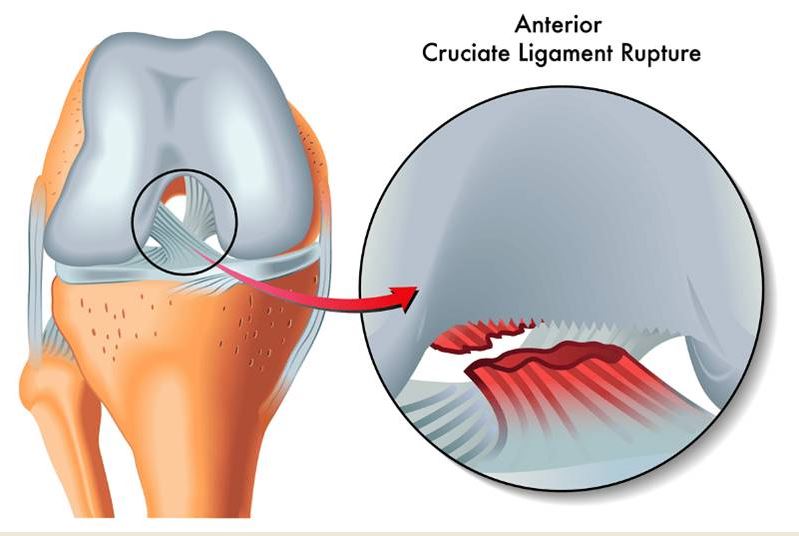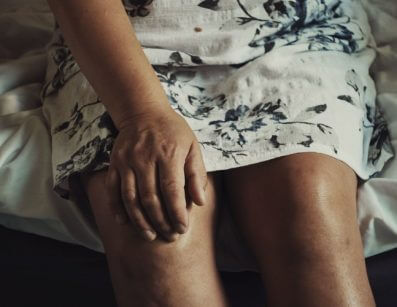Everything You Need to Know About ACL Injuries
ACL Injuries are very common, and can occur to people of all ages and backgrounds. Orthopaedic Specialist, Mr. Soong Chua, and his team at his Melbourne office, have a high level of experience working with ACL reconstruction. The following encompasses all you need to know about ACL injuries, and answers some frequently asked questions.
Knee Anatomy
The knee is one of the largest joints we have. The knee joint connects the femur (thigh bone) and the tibia (shin bone). The smaller bones of the fibula and the patella (kneecap) make up the knee. The bones in the knee are connected to the surrounding muscles with tendon.
Ligaments are structures that connect the bones in the knee joint. The anterior cruciate ligament (ACL) connects the femur and the tibia. It is located in the centre of the knee. It is the main ligament that provides stability to the knee. It stops the knee from sliding too far forward.
Types of ACL injuries
There are different levels or ‘grades’ of ACL injuries. They are classified according to the amount of damage to the ACL. Not all ACL injuries require surgery. It is usually the complete rupture of the ACL that requires surgery, and some tears depending on the level of severity.
- Grade 1 – A very small tear or a micro-tear, and some stretching of the ACL. The ligament is still intact and the patient feels that the knee is stable.
- Grade 2 – Partially larger tears in the ACL. Separation is seen in the ligament fibres. The patient feels that the joint is somewhat unstable.
- Grade 3 – This classifies a total rupture of the ACL. This means that the ligament fibres become completely torn. The knee becomes completely unstable, and surgery is used to repair the injury.
Types of treatment for different ACL injuries
The type of treatment that Mr Soong Chua recommends will depend on the severity and nature of the ACL injury. Ultimately, the goal of all ACL treatment is to return the knee to full strength, stability and mobility. Mr. Soong Chua and his team will assess the best path forward to achieve this.
Non-Surgical
Depending on the severity of the injury, non-surgical measures may be recommended in order to treat the ACL injury. These may include:
- Resting and elevating the knee, and icing to help with any swelling
- Anti-inflammatory medication to manage pain
- Modifying activity – walking with crutches or using a knee brace/immobiliser
- Physiotherapy consultations – physiotherapy may be recommended, including various exercises to regain strength and motion in the knee.
Surgical
- ACL Repair
The surgical procedure of an ACL repair entails connecting the torn ligament back to the tibia or femur. This procedure is rarer than the reconstruction option. This is because the ACL usually tears in the middle rather than at the connection to the bone. Reconstruction surgeries are often more successful than repairing surgeries.
The surgical procedure of an ACL reconstruction entails rebuilding the torn ligament using a substitute graft. The graft is made of tendon that has been taken from the surrounding knee area. In a similar way to how a burn victim may have a graft of skin from a different part of their body, to replace the skin that has been burnt. The graft for the torn ligament is often taken from the patella tendon, hamstring tendon or quadriceps tendon. Depending on the circumstances, an allograft tendon, obtained from an organ donor may be utilised. This is often the case if the ACL reconstruction is being performed as a revisionary measure. (i.e. that the knee has been reinjured, and a second surgery to reconstruct the ligament again, is required.)
The choice of which graft option will best suit the patient will be made by Mr. Chua after assessment of the injury.
When to Seek Help
ACL injuries and torn ACLs occur to people of any age and any background. The most common cause of ACL injury is stress from sports activity. Such as pivoting or twisting leading to hyperextension in football, netball or basketball. Some find that the knee can become so unstable, that there is pain in trying to walk normally. If the injury reaches this point, the patient should definitely seek help from an orthopaedic specialist. The patient should also seek help if any of the following signs and symptoms are experienced:
- A loud “popping” sensation felt in the knee
- Sever pain and inability to use the knee
- Swelling or redness
- Loss of range of motion
- Feel instability in the knee – i.e. it not feeling strong and solid when the patient moves
- Knee giving way when weight is put on the join
Recovery
The ACL recovery process will depend on the severity and nature of the ACL injury or tear. To recover from a Grade 1 – Grade 2 ACL injury, the patient may need to modify activity for 4-6 weeks.
Post-Surgical Recovery
For ACL injuries that require surgery, the recovery will take longer than injuries that only require non-surgical treatment. The following is a brief break down of the recovery process for surgical procedures:
- 0 – 2 Weeks:
Depending on the surgical procedure, and the advice from Dr Soong Chua, most patients will stay overnight in hospital after the surgery. The hospital staff will ensure that the patients pain is well controlled before they are discharged to go home.
Before the patient leave the hospital, a physiotherapist will help the patient learn how to walk on crutches. In most cases the patient can put weight on the knee immediately.
After the surgery, swelling and pain need to be controlled. The patient will be given instructions regarding this. It is important to keep the leg elevated, apply ice and rest the knee. The patient should take medications as prescribed by the orthopaedic surgeon, Mr. Soong Chua.
Some gentle exercises may be recommended in this period to start to strengthen the surrounding muscles. It is important that the patient remain in the knee brace if recommended, while walking. Most of the two-week period is spent resting and healing.
- Week 2 – 6:
The patient will meet with the physiotherapist and possibly also with Mr. Soong Chua to follow up with the progress of the ACL recovery. The physiotherapist will advise on exercises for the patient to perform, that will continue to further strengthen the knee muscles, and practice using the full range of motion of the knee. In this time the patient may stop using the crutches, but keep using the knee brace, when the knee is bearing weight. A patient may use an exercise bike in this period of the recovery, if recommended by the physiotherapist.
- Weeks 6 – 12:
The patient will continue to work with the physical therapist, slightly increasing the exercises to continue to strengthen the knee. The patient should be regaining a feeling of stability in the knee.
- Weeks 12 – 24:
In this period of the recovery, the patient should be moving towards regaining full normal function. The patient should feel comfortable to return to normal activity after 24. However, what this entails will depend on the advice given by Mr Soong Chu and the physiotherapist advice.
Mr Soong Chua will follow up with the recovery progress of the patient throughout this period. If the patient has any concerns or is having pain in the later stages of recovery, they should not hesitate to contact their physiotherapist or their doctor.
Frequently Asked Questions
Why are ACL injuries so common?
The answer to this question is two-fold:
- The ACL is not supported by much muscle in the surrounding area, in comparison to ligaments in other major joints. Therefore, there is a lack of support when a person twisted or rotates the knee.
- There has been an increase in sports participation over the last few decades, with the pattern growing of professionalising sports training at a younger age. Twisting and pivoting in sports is often the root of ACL tears and injuries.
How is an ACL injury diagnosed?
ACL injury diagnosis will begin with Mr. Soong Chua and his team collecting the patient’s medical history and performing a physical examination of the knee. An assessment will be made of the pain, range of motion and stability of the knee. Imaging tests such as X-rays and MRI scans will be performed to determine the extent of the injury and if surgery is required. Beyond this, arthroscopy (keyhole camera surgery) made be required to assess the extent of the injury inside the knee.
Is there a simple way to repair the damaged ACL without a reconstruction?
Depending on the severity of the injury, patients can receive physiotherapy, and this may be suitable to treat the knee and return it to full motion, without the need for a reconstructive surgery.
The patient’s level of activity, will affect the decision in regards to surgery. For example, if the patient is an elite athlete that needs the knee to be performing at optimal level, surgery will be the best way to achieve this. However, if the patient has a lower level of physical activity, it may be sufficient to rely on physiotherapy.
What type of follow-up is done after an ACL reconstruction?
The orthopaedic surgeon, Mr. Soong Chua will follow up with his patients at various increments after the surgery. The number and nature of the follow up appointments will depend on the severity of the original injury and the type of surgery. However, in general, a patient will usually be seen within the first week, at the two-week point, at the six-week point and then again at 3 months after the surgery. Mr Soong Chua will assess the progress of the ACL by assessing any symptoms of pain, and the range of motion.
Follow up appointments are also required with the physiotherapist to track the movement and strength of the knee, and give the patient exercises to help the ACL recover.
Learn More
For more information on the options for ACL reconstruction and knee surgery in Melbourne, please do not hesitate to contact the rooms of orthopaedic surgeon, Mr Soong Chua. Reach the office by calling 03 9038 5200 or enquire at our Contact Page.



